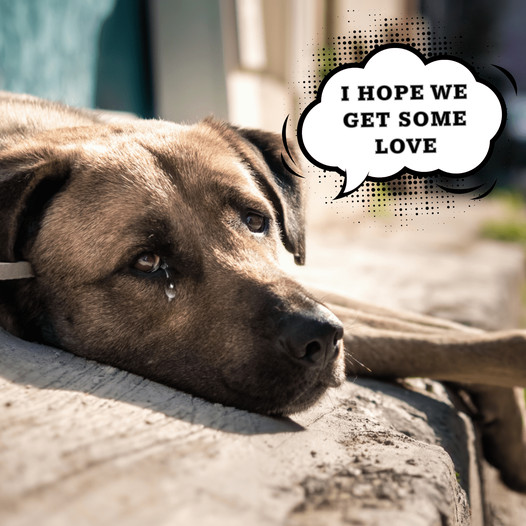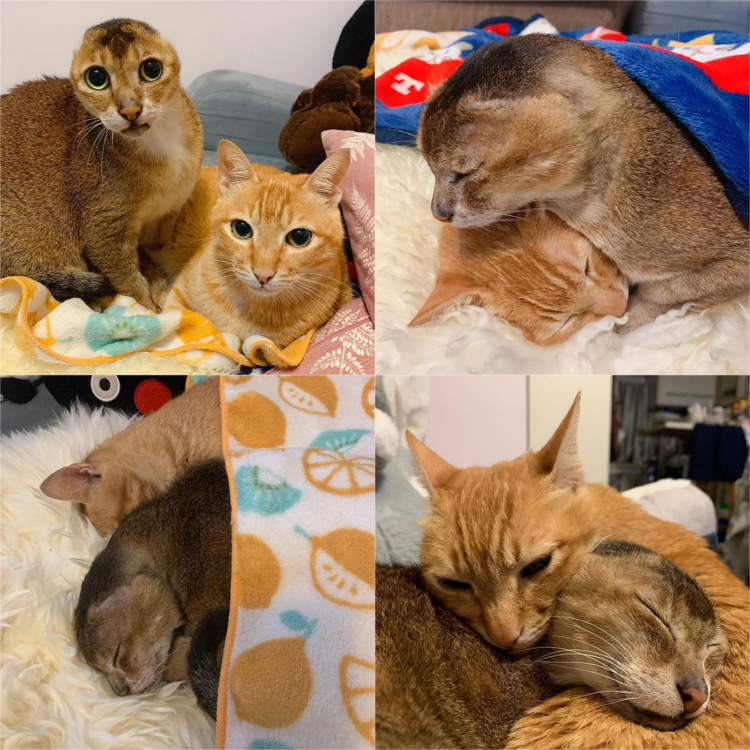
Golden retrievers are renowned for their friendly and devoted nature, making them one of the most beloved dog breeds worldwide. While these puppies are irresistibly cute and playful, they can also get into some mischief. Teaching your golden retriever puppy to sit is a crucial skill to master. Learning how to sit is not just a simple obedience command; it serves as the building block for other commands like stay, come, and heel. Beginning training early is key, as golden retrievers are intelligent and eager to please. Utilizing positive reinforcement methods, such as treats and praise, is effective in teaching the sit command. Consistency is vital to reinforce the behavior. Ultimately, teaching your golden retriever puppy to sit is an important step in their development and obedience training. It lays the groundwork for a well-behaved and content dog. With perseverance and steady training, anyone can successfully teach their golden retriever puppy to sit and reap the rewards of a well-trained companion.
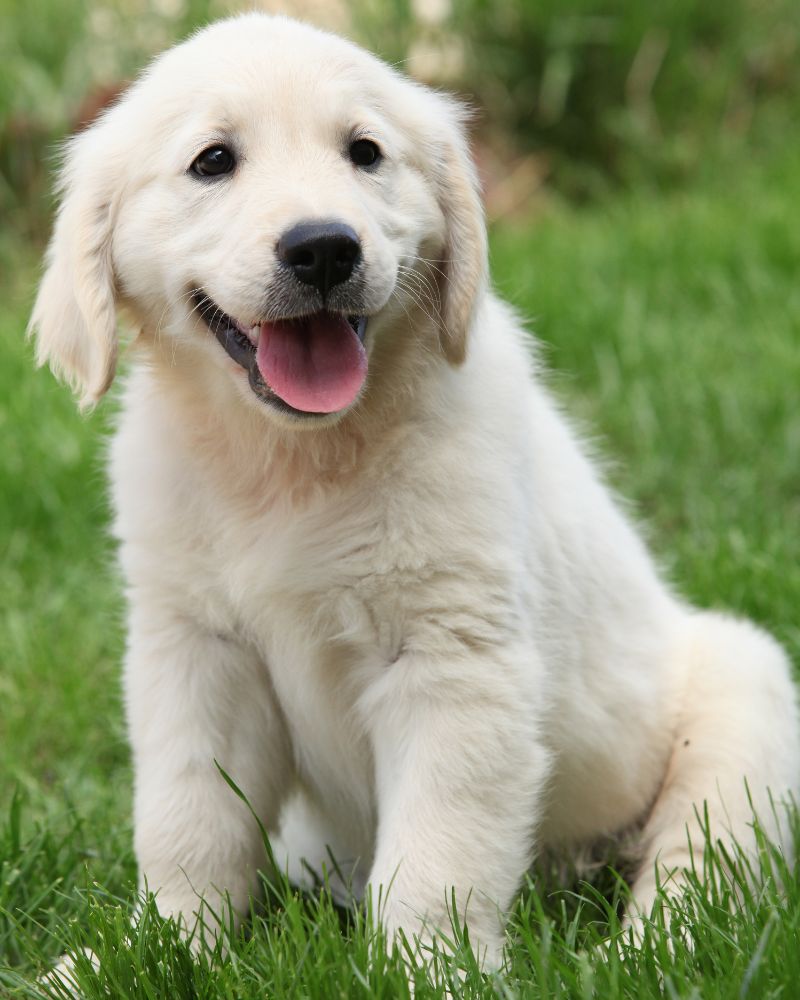
Teaching your Golden Retriever puppy how to sit is a crucial training exercise that lays the groundwork for obedience commands. It is a straightforward yet powerful method to establish control and communication with your lovable companion. There are several reasons why teaching your Golden Retriever to sit is vital: – Prevents jumping: Golden Retrievers have a tendency to jump, especially when they are excited. Teaching them to sit can prevent this behavior and make it easier for you to greet them without fear of being knocked over. – Improves focus: Teaching your Golden Retriever to sit can enhance their focus and attention span. It teaches them patience and the ability to wait for your command, which can be beneficial in various situations, like staying still while you gear them up for a walk. – Builds confidence: Learning new commands can boost your Golden Retriever’s confidence. Mastering the sit command gives them a sense of achievement, motivating them to learn more commands. – Eases grooming: Training your Golden Retriever to sit makes grooming a breeze. With them sitting still, brushing their coat, trimming their nails, and cleaning their ears becomes much simpler. In essence, teaching your Golden Retriever to sit is a crucial aspect of their training that can bring benefits to both you and your furry companion. Follow these steps to teach your puppy how to sit:
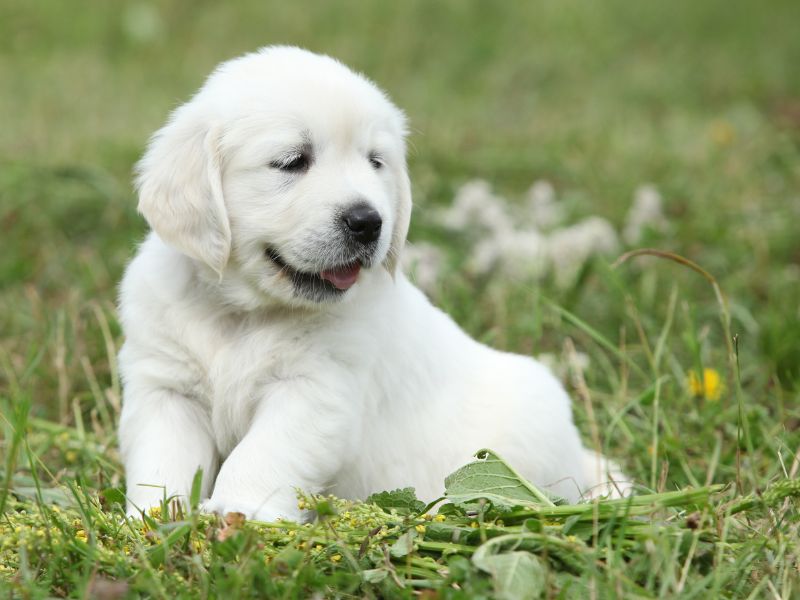
Setting your puppy up for success is crucial when teaching them how to sit. By following these simple steps, you can create a strong bond with your furry companion while also helping them learn a valuable command. Start by enticing your puppy with a treat, guiding their bottom to the ground as they follow the treat with their nose. Once they are in a sitting position, praise them and reward them with the treat. Repeat this process regularly until your puppy can sit without the treat as a guide. Gradually introduce a verbal cue along with a hand signal to reinforce the command. Practice in various environments to help your puppy generalize the behavior. Keep training sessions brief and positive, always ending on a positive note. With dedication and consistency, your puppy will master the art of sitting in no time!

Preparing your Golden Retriever puppy for sit training is essential for their success. Ensure they are well-rested and have had enough exercise to stay focused. Create a quiet, distraction-free environment for training and have tasty treats ready for positive reinforcement. Remember to be patient and consistent with short, frequent training sessions. With practice, your puppy will master the sit command in no time.
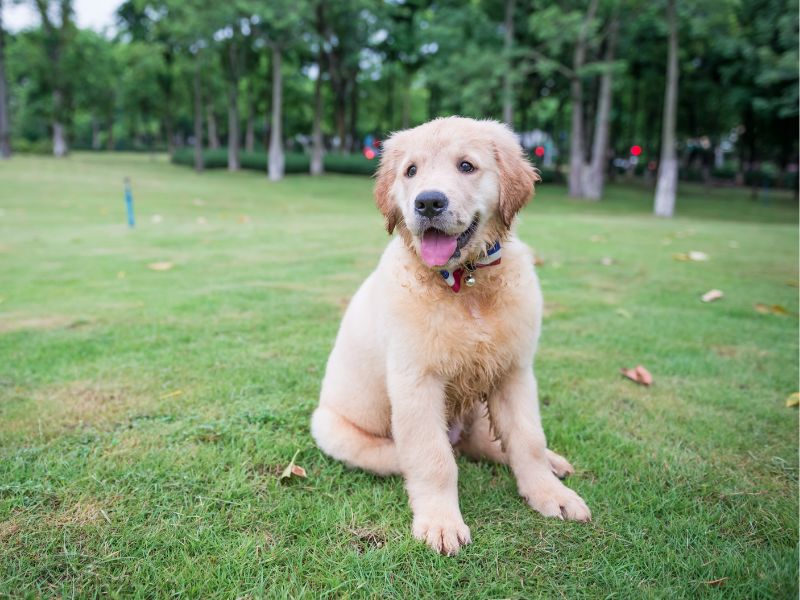
Teaching a young golden retriever how to sit is an important skill that promotes obedience and control. The initial step in training a puppy to sit involves getting them into the proper position. A good method is to use treats. Show the puppy a treat near their nose and then slowly move it upwards and backwards over their head. By following the treat, the puppy will naturally lower into a sitting position. It is crucial to quickly acknowledge and reward this behavior as soon as they sit down. Consistency is vital when instructing a puppy to sit. It is best to begin in a calm, distraction-free setting and then gradually introduce more challenges. Since puppies have short attention spans, keeping training sessions brief and enjoyable is key. Utilizing positive reinforcement like praise and treats can help motivate desired behaviors. With time and regular practice, a golden retriever puppy can grasp the command to sit. Step 2: Introduce the Command “Sit”
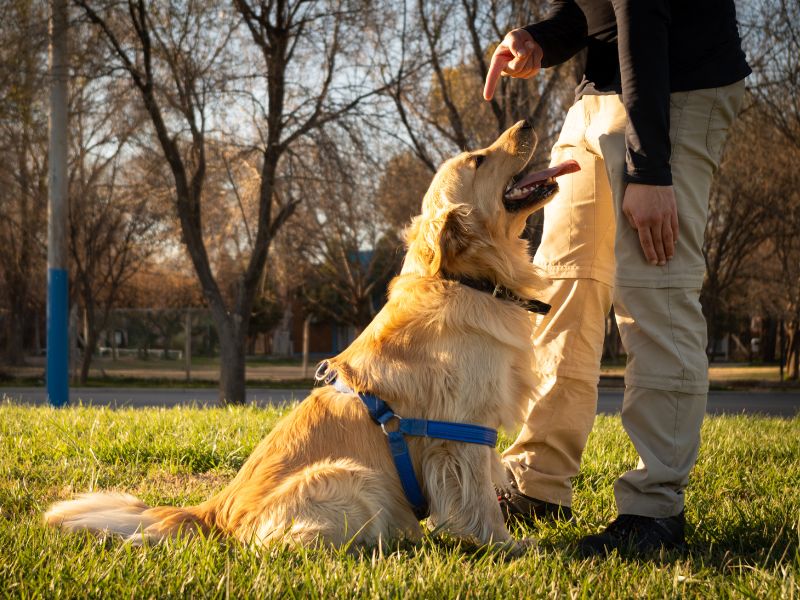
Once your puppy has mastered sitting on command with a lure, it is time to introduce the verbal cue “sit.” This step is crucial for helping your puppy connect the action of sitting with the command. It is essential for your puppy to learn to sit on command rather than just when there is a treat involved. To introduce the word “sit,” you should say the command right before using a treat to guide your puppy into the sitting position. For example, say “sit” and then lure your puppy into sitting with a treat. This way, your puppy will start to understand that the word “sit” means to sit down. Consistency is key when adding the verbal cue “sit.” Make sure to say the command every time you guide your puppy into sitting. With time and practice, your puppy will start sitting on command without the need for a treat or lure. Remember to stay patient and remain consistent while teaching your puppy to sit. With dedication and consistency, your puppy will master sitting on command in no time. Next, you can consider adding a hand signal to accompany the verbal cue “sit.”
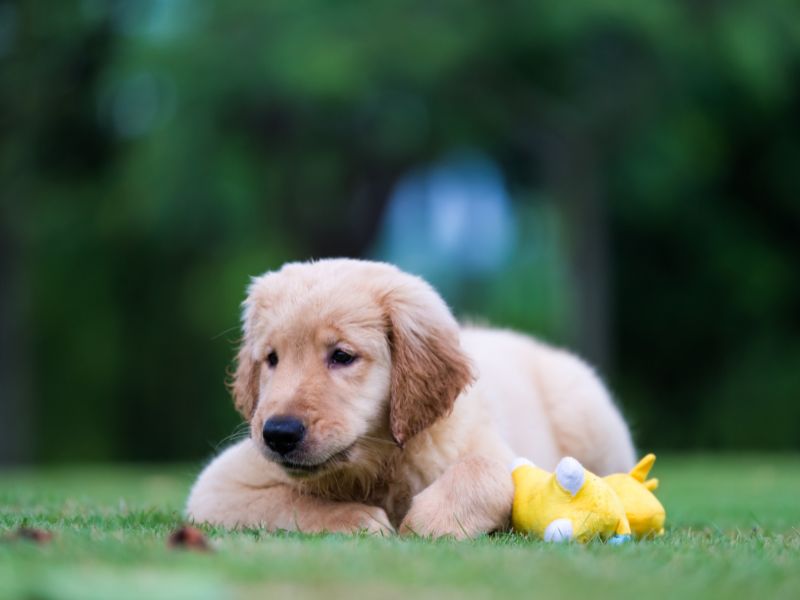
After your Golden Retriever pup has mastered sitting at your command, try adding a hand signal to reinforce the action. Puppies respond well to visual cues, so holding your hand up with your palm facing the pup and fingers pointing upwards can help solidify the verbal command “sit.” Consistency is key when using a hand signal – always use the same gesture when giving the command and ensure everyone in your home is on the same page. Over time, your pup will learn to sit just by seeing the hand signal, allowing you to gradually phase out the verbal command. To further reinforce the training, practice in different environments to keep your pup challenged and reinforce the behavior in various situations. This will help your furry friend become a well-trained companion both at home and out and about.

In order to make sure your golden retriever puppy can sit and stay in any scenario, it’s crucial to train them in various new and challenging settings. This involves gradually introducing distractions and practicing in different places like parks, sidewalks, and busy areas. Start by training in a controlled setting and slowly increase the distractions. For instance, begin in a quiet room with no interruptions and then add in toys or other objects. Once your puppy can sit and stay in a quiet room with distractions, move on to more stimulating environments, such as a park with other dogs and people. While training in new environments, stay patient and consistent with your methods. Use positive reinforcement and reward your puppy for good behavior. It may take some time for them to adjust to new surroundings, but with practice and patience, they’ll learn to sit and stay no matter the situation. By practicing in different and challenging locations, you’ll help ensure your golden retriever puppy is well-mannered and obedient under any circumstance.

After successfully training your golden retriever puppy to sit on command, the next step is to teach them how to stay seated, which is a crucial skill for their safety in various situations. To start the training process, issue the sit command and then raise your hand in front of them while saying “stay.” Begin with short periods of time and gradually increase the duration as your puppy becomes more adept at remaining seated. Don’t forget to reward your puppy for following the command, whether with treats or verbal praise. If your puppy attempts to stand up before you give the release cue, gently reposition them into a seated position while saying “no.” It’s essential to practice this command in different settings and with distractions to help your puppy grasp the concept of staying seated regardless of the circumstances. Through patience and consistency, your golden retriever puppy will eventually excel at both the sit and stay commands. Avoiding common mistakes, such as inconsistency or lack of practice in varied environments, will contribute to the success of your puppy’s training.
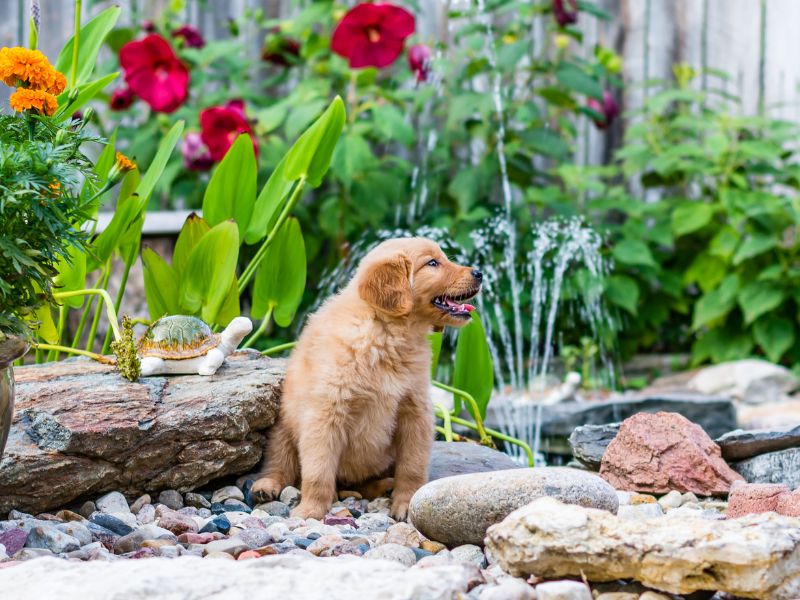
Training your puppy to sit is a fundamental skill that every dog owner should work on with their new furry friend. Unfortunately, many novice puppy parents tend to make some common mistakes that can impede their puppy’s progress. Here are a few pitfalls to avoid when teaching your puppy to sit: 1. Lack of Consistency: Consistency is key when teaching your puppy any command. Establishing a regular training schedule and sticking to it will help your puppy learn faster. Inconsistency can confuse your puppy and delay their progress. 2. Using too many Words: Simplicity is crucial when giving commands to your puppy. Using too many words or phrases can overwhelm and confuse your puppy. Stick to one simple command, such as “sit,” and be consistent with it. 3. Rewarding the Wrong Behavior: Rewarding your puppy for the wrong behavior can hinder their learning process. Make sure to only reward your puppy when they correctly perform the desired behavior, such as sitting down instead of standing up. 4. Neglecting Positive Reinforcement: Positive reinforcement, such as treats, praise, or affection, is a powerful tool in training your puppy. Without positive reinforcement, your puppy may lose interest or become frustrated. Rewarding good behavior encourages your puppy to continue learning and obeying commands. 5. Avoiding Frustration: Patience is key when training a puppy. Getting frustrated or angry can have a negative impact on your training sessions. Stay calm, positive, and patient to create a conducive learning environment for both you and your puppy. Remember, training a puppy is a process that takes time and dedication. By avoiding these common mistakes and staying patient and consistent, you’ll soon have a well-trained puppy who can sit on command effortlessly.
Teaching your golden retriever pup to sit is a key skill that can benefit both you and your furry companion. Fortunately, it’s not too difficult to teach and there are lots of resources out there to help you out. One great way to learn how to train your pup to sit is by checking out instructional videos online. There are plenty of helpful tutorials available, like the one from ExpertVillage on YouTube, which is especially useful for beginners. To start the training process, you’ll need to pick a command word and a hand signal. The command word is typically “sit,” but you can choose whatever word you prefer. The hand signal should be something simple and easy for your pup to see, like holding your hand up with your palm facing them. To begin training your pup to sit, hold a treat in front of their nose and move it upwards and backwards over their head. Your dog should naturally sit down to follow the treat. When they do, say “sit” and give them the treat. Practice this a few times each day until your pup starts sitting on command with the hand signal. Be patient and consistent during the training process. It might take some time for your pup to grasp the concept, but with practice and patience, they’ll get there. Don’t forget to reward good behavior with treats and praise. In summary, teaching a golden retriever puppy to sit is a valuable skill that every owner should focus on. With dedication, consistency, and positive reinforcement, you can successfully train your pup to sit when commanded. Start training early, use both verbal and visual cues, and maintain their overall health and well-being for a happy and well-behaved lifelong relationship with your furry friend.

